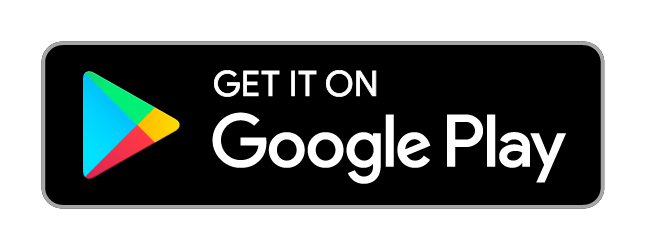Information is constantly changing! Call ahead to verify hours and availability.
Light Bulbs - CFLs
Do not throw fluorescent or other mercury-containing lights in the trash or recycling bins. High intensity discharge, metal halide, sodium and neon lights all contain mercury as well. It’s illegal and mercury exposure can harm the brain, heart, and immune and nervous systems. Mercury products contaminate California’s drinking water, fish, soil, and air when they are not managed properly. The mercury limit in drinking water is 2 parts per billion in California, since even low quantities are extremely hazardous.
The following lamps are considered hazardous in California: fluorescent lamps, compact fluorescent lamps, HID lamps, High intensity discharge lamps, metal halide lamps, sodium vapor lamps, grow lamps, Zenon lamps, headlights - auto, mercury vapor lamps, video projector lamps, ultraviolet lamps, UV lamps, water treatment lamps, sun lamps, tanning lamps, mercury containing lamps, LED lamps. The following ballasts are considered hazardous in California: light fixture ballasts, lamp ballasts, electronic ballasts, fluorescent light ballasts, HID light ballasts, PCB containing ballasts, no-PCB ballasts.
Be sure to transport in a way that prevents breakage. If a light breaks, refer to epa.gov/cfl. If a bulb breaks, open a window to disperse mercury vapor, collect the shards with tape, and place in a closed and sealed container—do not vacuum!
How are lights recycled? Lights must be recycled at EPA-approved sites. Glass is recycled or landfilled, recovered metal is recycled, and mercury is stored, disposed, or reused.
-
- Safe Disposal
1585 Folsom St., San Francisco • (415) 863-2020There is a 5 light limit per trip.Free Drop-off -
- Safe Disposal
1695 Mission St., San Francisco • (415) 621-8511There is a 5 light limit per trip.Free Drop-off -
- Safe Disposal
4255 1st St., Livermore • (925) 245-2440Free Drop-off -
- Safe Disposal
5584 La Ribera Street, Livermore • (800) 606-6606Unbroken lamps only & ballasts. Boxes for lamps available for purchase to then fill and drop-off.Drop-off for a Fee -
- Recycle
5584 La Ribera Street, Livermore • (800) 606-6606Unbroken lamps & ballastsDrop-off for a Fee -
- Recycle
5584 La Ribera Street, Livermore • (800) 606-6606lamps & ballastsFree Drop-off -
- Safe Disposal
2075 Market St., San Francisco • (415) 934-9010There is a 5 light limit per trip.Free Drop-off -
- Safe Disposal
512 Divisadero St., San Francisco • (415) 552-1168There is a 5 light limit per trip.Free Drop-off -
- Safe Disposal
30677 Huntwood Ave, Hayward • (510) 429-1129Mail-in recycling kit only. Lamps including but not limited to: traditional straight, U-shaped and coated fluorescents, as well as mercury vapor, high-pressure sodium, metal-halide, ultraviolet, ARC, and compact fluorescent & HID lampsPick-up for a Fee, Mail-in for a Fee -
- Safe Disposal
3545 California St., San Francisco • (415) 751-5767There is a 5-light limit per tripFree Drop-off -
- Safe Disposal
5166 3rd St., San Francisco • (415) 822-2655There is a 5 light limit per trip.Free Drop-off -
- Safe Disposal
479 Castro St., San Francisco • (415) 431-5365There is a 5 light limit per trip.Free Drop-off -
- Safe Disposal
30055 Industrial Pkwy., Union City • (510) 429-5496Free Drop-off -
- Safe Disposal
144 Clement St., San Francisco • (415) 221-1888There is a 5 light limit per trip.Free Drop-off -
- Safe Disposal
1629 Haight St., San Francisco • (415) 431-3392There is a 5 light limit per trip.Free Drop-off -
- Safe Disposal
956 Cole St., San Francisco • (415) 753-2653There is a 5 light limit per trip.Free Drop-off -
- Safe Disposal
, San Francisco • (415) 330-1405San Francisco Residents only.Free Pick-up -
- Safe Disposal
32040 Union Landing, Union City • (510) 476-0600Free Drop-off -
- Safe Disposal
5435 Geary Blvd., San Francisco • (415) 666-3380There is a 5 light limit per trip.Free Drop-off -
- Safe Disposal
724 Irving St., San Francisco • (415) 731-2038There is a 5 light limit per trip.Free Drop-off -
- Safe Disposal
685 Chenery St., San Francisco • (415) 585-5761There is a 5 gallon limit per trip.Free Drop-off -
- Safe Disposal
2815 Diamond St., San Francisco • (415) 586-9999There is a 5 light limit per trip.Free Drop-off -
- Safe Disposal
501 Tunnel Ave., San Francisco • (415) 330-1425First 30 bulbs or tubes are free - $3.00/unit for greater than 30. Bulbs and tubes must be delivered in sealed boxes and labeled as Universal Waste. Use Public Disposal Area or make appointment for VSQG Service. SF businesses ONLYFree Drop-off, Drop-off for a Fee -
- Safe Disposal
501 Tunnel Ave., San Francisco • (415) 330-1400Limit 30 bulbs per month FREE - $3/bulb each additional bulb.Free Drop-off -
- Safe Disposal
6122 Geary Blvd., San Francisco • (415) 752-1888There is a 5 light limit per trip.Free Drop-off

